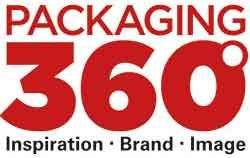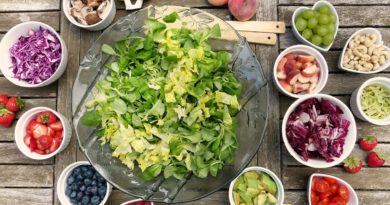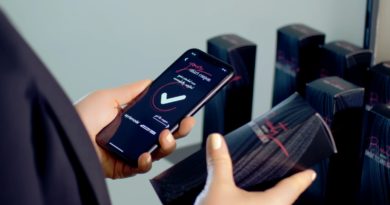“Raw material recyclates from Asia make no sense”
Last year, the world's leading trade fair BIOFACH was already increasingly focusing on the subject of packaging. Environmentally friendly packaging will also play an important role there this year, which the industry will present in Nuremberg from 12-15 February. In the run-up to BIOFACH, Carolina Schweig, an expert in sustainable packaging, explains in an interview that she is observing pressure for action in the debate on environmentally friendly products. She calls for more recyclable packaging and closed cycles as a first step.
von Anna Ntemiris
Companies and brands such as Frosch are already using recyclates in packaging for consumer goods such as shower gel. In the food industry, concern about the final destination of used plastic is particularly pronounced. What is your attitude towards recycled plastic for food packaging?
Carolina Schweig: We’re very happy with the Frosch brand and its use of recycled material, and we think it’s great that the manufacturer Werner and Mertz is making its research available to us. Basically, recyclates will have to be used in food packaging some day. But that isn’t entirely without probs for now. We still lack extensive testing as far as the composition of plastics is concerned.
There are 900 possible different additives. How does a given composition react? Which substances do we need to be looking for? Research is needed there, test methods have to be developed. Pollutant-tight barriers that can be recycled must be tested before they can be used. The whole process can take one and a half to two years. Consequently, during this period recyclates should be used in parallel in low-risk packaging, and efforts should be made to make plastics more recyclable. A very detailed market for recyclates is also needed. An alternative would be to use chemical recycling to break down the packaging into its raw materials. L’Oréal, for example, is upscaling this technology.
What do you think of edible packaging?
Schweig: I wouldn’t want to eat what has passed through ten different hands and been lying on greasy high-bay warehouses or conveyor chains. Let us stay realistic here: what’s this packaging supposed to do? This is even more obscure than the issue of alleged biodegradable packaging, which currently lacks a proper disposal method. At the end of the day, you’re creating packaging that just ends up in the rubbish.
If you bring a Tupperware box with you, it mustn’t be passed over the cheese counter because of the risk of contamination by pathogens. With edible packaging, the subject of pathogens is glossed over. Ultimately, this is just emotional campaigning for its own sake. You can try to make the demon packaging acceptable by calling it biodegradable or edible. Let’s try instead to minimise packaging, use of it, less or make it recyclable. Then we can also integrate packaging from renewable raw materials into the portfolio in a sensible way.
How does a new packaging strategy affect the costs for a company?
Schweig: If you start by analysing what’s superfluous, for example where carbon dioxide can be saved through process optimisation, you free up money for new developments. The most expensive thing is if you don’t have a strategy but go for biofilm, for example, to become more sustainable. Basically, far too much packaging material is still being used, you can save money and environmental impact there. In the case of food products, for example, sometimes twice as much film is used as necessary because you simply let the packaging machine run instead of adapting it to the product. That’s not necessary. Finally, let us not forget that packaging materials are paid for twice over – when they’re bought, and when they’re recycled.
What influence is the current discussion about plastics having on the packaging industry and also on the design of organic products?
Schweig: We’ve noticed that the organic industry is also choosing complex laminated composites with paper, adhesive and barrier layer. Film would often be more environmentally friendly. Nobody wants a pure plastic cup for dairy products because plastic is bad. But consumer don’t take a yoghurt cup apart before throwing it away, in order to make it recyclable. I’m also seeing that paper is considered good I its own right. I’m not an advocate for the plastics industry, but when it really comes to climate and the environment, we need to look at things in a more nuanced way.
What are the trends in the organic sector when it comes to packaging?
Schweig: The use of so-called bioplastics, “Ocean Plastic”, “Social Plastic” and recycled material is a trend. But recyclates are the second step. First, we need recyclable packaging, because we need closed cycles. Currently, recyclate raw materials are being transported from Asia to Germany. This makes no sense, it’s just action for its own sake that does exactly the opposite of what we want. We must be able to obtain recyclates from our own cycles.
You favour grass fibre as a material for cardboard packaging? Why?
Schweig: Currently, more than 40 percent of our pulp comes from eucalyptus trees in South America. It would be more sustainable to obtain the pulp from deciduous trees in Europe, for example. But that costs more. Grass is cheaper and a fast-growing raw material. Grass from ecological compensation areas which is just mowed and not used for feed can be processed and mixed with cellulose. Filling with grass improves the properties of the raw paper, so that lower grammages can be used. This saves direct resources – material, weight, greenhouse gases, energy and waste water. The high proportion of grass waste – up to 40 per cent is possible – also reduces the need for trees from plantations that supply cellulose.
Will products such as shampoo without packaging and hand soap establish themselves in the long term?
Schweig: I don’t know how strong the zero waste shop trend, but it makes sense to some extent. Hand soap has an ecological advantage. You save yourself having to carry water around.
Your engineering office C.E. Schweig developed a paper for the Hamburg tobacco manufacturer Santa Fe Natural Tobacco with the same important properties as the metallised versions. This means the cigarette manufacturer can dispense with the environmentally harmful use of aluminium. Do you not care what’s in it if you can come up with more sustainable packaging?
Schweig: No, the content is also relevant. I am against smoking, and we had given a lot of thought to this project beforehand. We wouldn’t do this for just any tobacco company. I liked the organic cultivation method, the social commitment and the company’s honest approach at the time. And our innovation was adopted by other tobacco brands. So it made sense. I worked for many years as a packaging engineer in large companies in the consumer goods industry, and sometimes I asked myself what I was doing. Today, my employees can also change even customers’ minds about sustainability if we see that what they want to do doesn’t make ecological sense. We have this freedom.
Carolina Schweig is a graduate in process engineering for paper and plastics processing with more than 25 years of experience in the packaging industry. Her packaging consultancy C.E.Schweig, founded in 1997, follows the principle “We make sustainability measurable and efficient”. In her daily work, particularly in the FMCG industry and medical technology, she supports her customers in developing and launching new, sustainable packaging solutions. In December 2019 Schweig was appointed to the advisory board of Stiftung Warentest. In addition to her support as a member of the technical advisory board. Besides this function she will also work with Stiftung Warentest as an expert on sustainable packaging on general packaging issues relating to nutrition, cosmetics and health. Thanks to her professional experience, which includes Beiersdorf, Colgate Palmolive and Unilever in Europe and overseas, Carolina Schweig knows and appreciates the multifaceted nature of packaging technology at the meeting point of technology, business and marketing.




